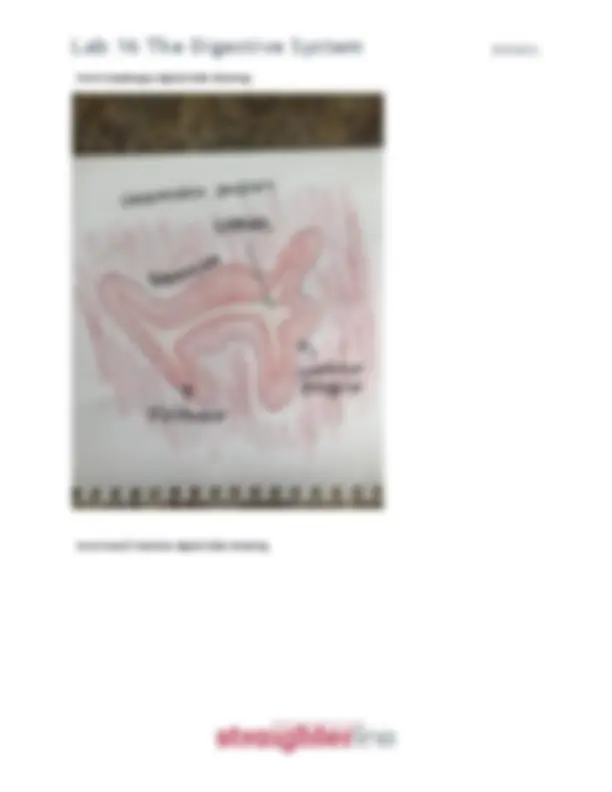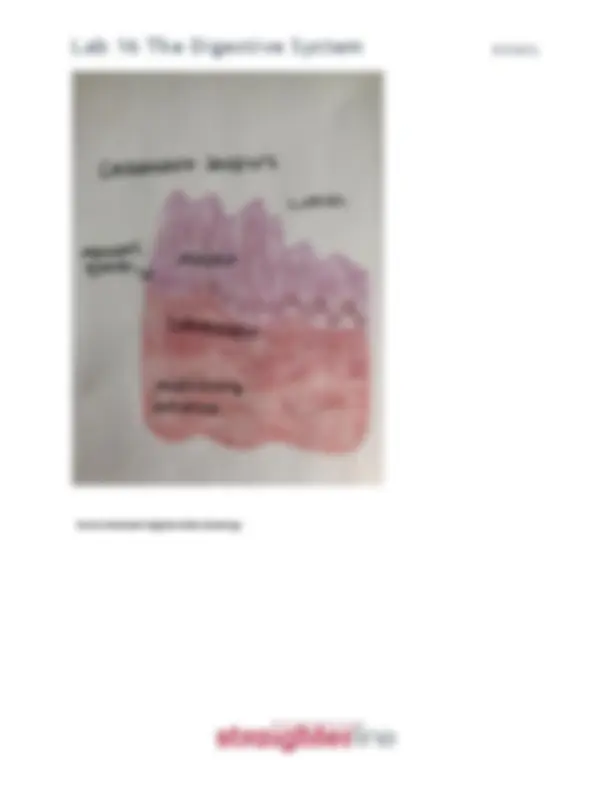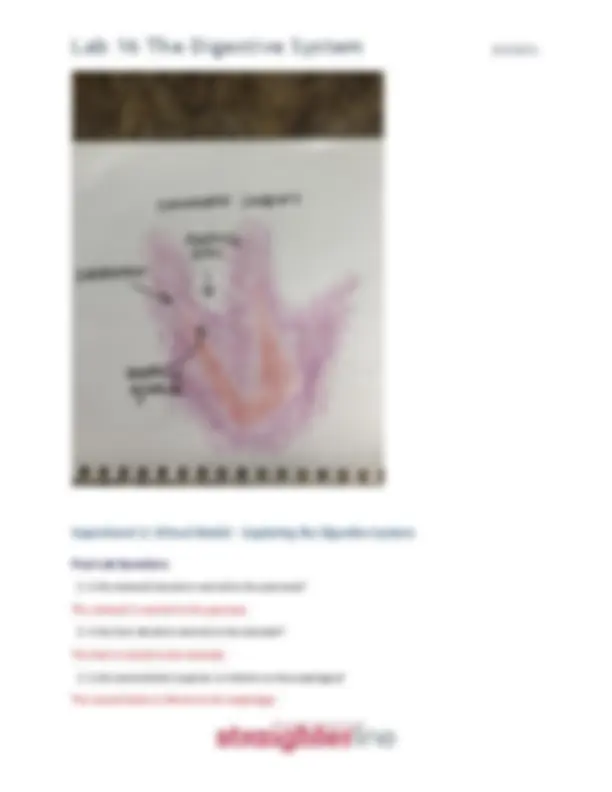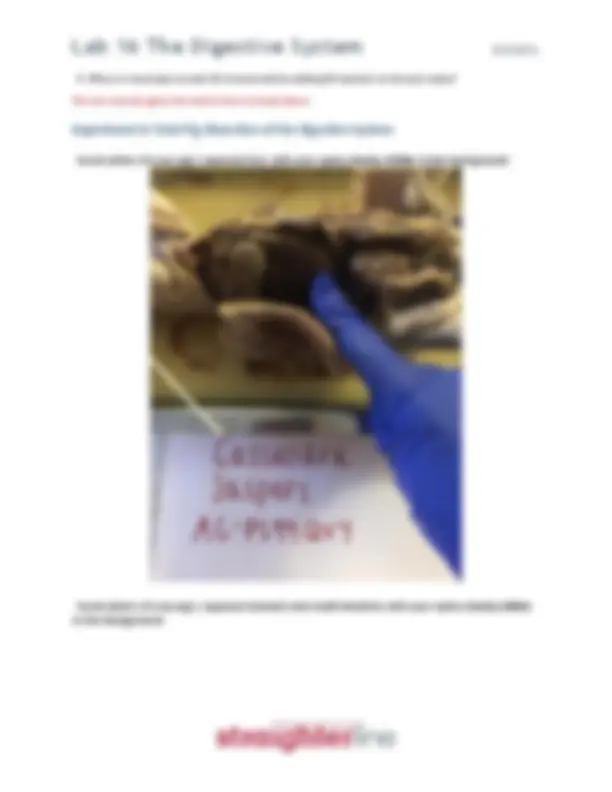








Study with the several resources on Docsity

Earn points by helping other students or get them with a premium plan


Prepare for your exams
Study with the several resources on Docsity

Earn points to download
Earn points by helping other students or get them with a premium plan
Community
Ask the community for help and clear up your study doubts
Discover the best universities in your country according to Docsity users
Free resources
Download our free guides on studying techniques, anxiety management strategies, and thesis advice from Docsity tutors
A lab worksheet for BIO 202L students. It covers the digestive system and includes pre-lab and post-lab questions for three experiments. The pre-lab questions cover the digestion that occurs in the oral cavity, the function of the liver and gall bladder in digestion, and the importance of the orientation of muscle of the stomach wall. The post-lab questions cover the microscopic anatomy of the digestive system, the virtual model of the digestive system, and a digestive system coloring activity. useful as study notes and exam preparation.
Typology: Exams
1 / 10

This page cannot be seen from the preview
Don't miss anything!







Pre-Lab Questions:
The tongue moves food into the mouth and the teeth masticate the food. Salivary glands in the mouth assist mastication, moisten the mouth, and prepare the food for digestion. The digestive aspect of saliva is an enzyme called salivary amylase. This enzyme breaks down covalent bonds between glucose and other polysaccharides to produce disacchardies.
The liver produces bile to neutralize stomach acid and emulsify lipids. As a result, the stomach acid entering the duodenum is more neutral.
The Gallbladder stores bile secreted by the liver. The bile is deposited into the small intestine after eating food to help digest the acid.
The orientation of the stomach wall is important because it aids peristalsis and directs the movement of food through the digestive system.
Experiment 1: Microscopic Anatomy of the Digestive System
The luminal surface of the small intestine mucosa is covered completely by a villa.
Insert stomach digital slide drawing:
Experiment 2: Virtual Model – Exploring the Digestive System
The stomach is ventral to the pancreas.
The liver is ventral to the stomach.
The vesical bilaris is inferior to the esophagus.
Experiment 3: Virtual Model – Digestive System Coloring Activity
Insert the proper images in the space below:
Digestive System: Anterior View:
Digestive System: Posterior View:
Experiment 4: Swallowing
The tongue pushed against the soft palate during swallowing.
The larynx movedup and down and the throat tightened.
There was a gurgling sound and the water make a soft swishing sound as it traveled to the stomach.
Experiment 5: Chemical Digestion of Food: The Role of Enzymes
Table 2: Color Observations
Test Tube Initial Color Final Color
1 Clear Brown/Red
2 Clear Black
3 Clear Black
4 Clear Brown/Red
Mechanical digestion breaks food into smaller pieces to prepare it for further digestion.
The starch would turn black if present. If it was not broken down all the way, it would be darker.
Amylase stops working in the stomach because the pH is about 2 and it only works when the pH is 6-7. The pancreas also produces amylase.